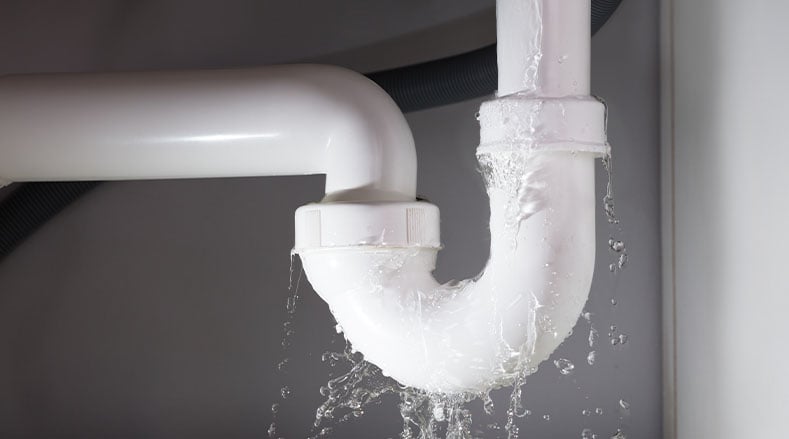
Leaking water can quickly ruin your business facility and its contents, and the cost to repair all of that damage rises rapidly if you don’t address the problem immediately. You have to act fast to find the source, stop the flow and address the water-logged mess before it grows and gets worse.
Rather than reacting to an emergency, there is an easy, proactive measure you can take to protect your facility. Installing a remote monitoring system with water detection sensors is a cost-effective way to discover leakage before it becomes a disaster.
Cost of Water Damage
The annual cost of water damage and removal in the U.S. is $13 billion. Every day 14,000 Americans face a water damage emergency.
These general activities determine the cost of water damage repairs:
- Water removal, cleanup, ventilation and decontamination
- Building and structural repairs
- Replacement or cleaning of mechanical equipment and other facility contents
- Business downtime during restoration
The dirtiness of the water also affects the cost of repairs:
- Clean water damage: Water coming from a clean source like a water pipe or rain. Estimated cost: $3.75 per square foot.
- Grey water damage: Water leaking from an appliance that may have soaps or other chemicals in it that need to be treated as part of the remediation. Estimated cost: $4.50 per square foot.
- Black water damage: Water seeping from a contaminated source like a sewer backup that may contain harmful microorganisms that are health hazards. Estimated cost: $7 per square foot.
Water Damage at Commercial Facilities
Water damage at business facilities can come from a number of sources. Even small leaks can cause extensive damage. For example, a 1/8” crack in a pipe can release 250 gallons of water per day. Aside from weather-related water damage, culprits include damaged plumbing, pipes, drains, water heaters, HVAC systems and sprinklers. For example, a malfunctioning sprinkler system in a building with many stories can cause water to penetrate many floors, causing significant damage and business disruption.
Often slow leaks and the ensuing destruction aren’t noticeable right away. However, they are causing major problems inside walls, under floors and in other hidden places for a long time before they are discovered.
Remote Monitoring and Water Detection
Remote monitoring systems are used to measure changes in environmental conditions around the clock like the presence of seeping water, temperature changes, humidity fluctuations, power failure and more. When the monitoring system detects that a sensor reading has moved out of the preset range, it sends a notification via phone call, text or email to designated personnel. This immediate alert helps staff address the problem right away. Advanced systems like Sensaphone’s Sentinel line allow users to remotely check real-time condition status from anywhere through an app on a mobile device or laptop.
Proper placement of water detection sensors is key. Although spot sensors are available, the best way to achieve widespread water detection is by using a zone water detection sensor. These sensors use a water rope attached to the sensor. When water touches the rope, the system triggers an alarm.
For larger areas, you can link several leak detection ropes along the entire perimeter of the floor and along any pipes that carry fluids. You can also arrange them around or under critical equipment that must remain dry. You can also place them beneath a raised floor, inside a drop ceiling or in the spaces between floors. It’s a good idea to fit the perimeter around HVAC equipment with leak detection rope, as well. By linking up to 10 water ropes together, one water detection sensor can cover up to 100 square feet of floor space.
Take Control of Water Damage Threats
Installing a remote monitoring system is an extremely cost-efficient way to secure an extra layer of protection for your facility and inventory. If you have any questions about protecting your business from water damage and other environmental threats, contact our experts.







